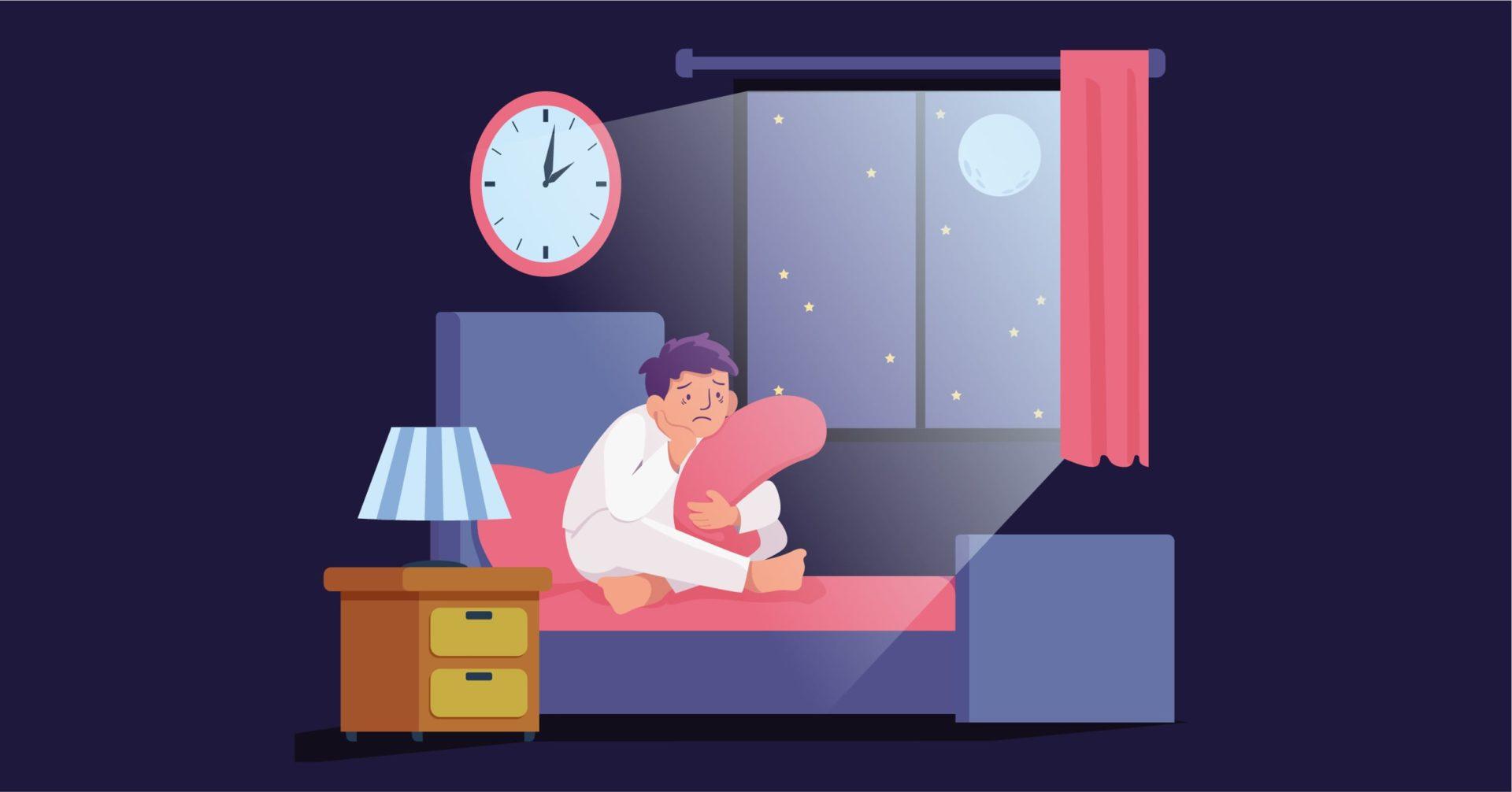Overview
Nightmares are quite common, often defined as vivid and frightening on the basis of their content. However, recurrent occurrences of disturbing nightmares that lead to significant distress are characteristic of Nightmare Disorder, and can lead to serious consequences including impaired life quality, fatigue, and sleep deprivation.
Increased distress due to frequent nightmares also causes affective symptoms such as depressive symptoms and anxiety, and can lead to an increase in the risk of suicidality.
There is a female predominance in the prevalence of the disorder, and its onset can range from childhood to adolescence, spanning into adulthood.
The causative factors linked to nightmares place great importance to trauma, as well as trait sensitivity and substance use.
Underlying psychiatric conditions are extensively associated with the presence of nightmares, in the sense that Nightmare Disorder leads to poor psychiatric outcomes, commonly occurs with psychiatric comorbidities, and exacerbates the symptoms of those underlying conditions.
Posttraumatic Stress Disorder is the most common comorbidity of Nightmare Disorder.
While there are no established pharmacological interventions, there are several psychotherapeutic modes of treatment that have shown efficacy in managing Nightmare Disorder. Medication usually targets underlying medical or psychiatric conditions.
Signs and Symptoms
The signs and symptoms of Nightmare Disorder include:
- Frequent occurrences of vivid dreams having distressing content
- Remembering dreams clearly even after waking
- Sleep disturbances
- Fatigue and tiredness
- Inability to concentrate
- Daytime sleepiness
- Turbulent mood
- Inability to fall asleep due to stress associated with bedtime
- Isolated sleep paralysis after waking
- Sweating during sleep
Risk Factors
Extensive reviews of literature have pointed out a female prevalence in the epidemiology of Nightmare Disorders. There is a rising prevalence of the disorder from childhood to adolescence, continuing to increase in women into adulthood as well.
The onset of nightmares is said to be between ages 3-6, becoming severe late in adolescence or early into adulthood. Individuals with Posttraumatic Stress Disorder, other various mental disorders, refugees, and children and adolescents are typically susceptible to nightmares.
Causative factors of Nightmare Disorder vary greatly. Broadly, hyper-arousal and impaired fear extinction have been listed within the aetiology of Nightmare Disorder, which are in turn caused by a range of factors including trauma and childhood adversity, sensitivity to negative events or emotions, and physiological factors including sleeping problems and substance use.
Further, a genetic predisposition among those with first-degree relatives with parasomnias had been established.
Recurrent and distressing nightmares have also been linked with medical conditions and treatments. This includes medical conditions such as heart diseases, cancer, Parkinson’s, and pain, as well as procedures such as haemodialysis or medication withdrawal.
Depression and grief, insomnia, anxiety disorders, personality disorders, schizophrenia, and Posttraumatic Stress Disorder have been linked to frequent nightmares. In most cases of psychiatric comorbidities, a separate diagnosis of Nightmare Disorder is not made, but nightmares that occur prior to the onset of the disorder, or even after remission may require an independent diagnosis.
Diagnosis
A thorough clinical assessment is required in order to determine Nightmare Disorder as well as differentiate it from similar conditions or disorders such as nightmares, dysphoric dreams, sleep terrors, REM Sleep Behavior Disorder, and Nocturnal Panic Disorder. It is also important to screen for possible underlying comorbidities such as Depression.
The DSM-5 lists the following diagnostic criteria for Nightmare Disorder:
- Repeated occurrences of long, distressing and vivid dreams that involve themes such as threat to life, security, or physical integrity and occur during the second half of the major sleep episode.
- Individuals become alert and aware rapidly upon waking.
- Significant distress or impairment in various areas of functioning is experienced.
- The nightmare symptoms are not due to physiological effects of drug use or medication.
- Coexisting mental and medical disorders do not adequately explain the major complaint of distressing dreams.
Potential causative factors of the disorder are also assessed and determined during the diagnostic process. A detailed history of the individual is necessary for the same, including experiences of trauma that might be indicative of Posttraumatic Stress Disorder.
Overnight polysomnography may be carried out in order to rule out potential underlying sleep disorders when the present symptoms include sleep disturbances.
Treatment
The mode of treatment for Nightmare Disorder usually depends on severity, course, and comorbidity.
Treatments that target the chronic repetition of nightmares include desensitization and exposure therapy, image rehearsal therapy, and lucid dreaming.
- Desensitization exercises include muscle relaxation combined with imagining the details of the nightmare and relaxing during the moments of tension and distress, while exposure therapy consists of vividly imagining the nightmare without any accompanying relaxation techniques in order to construct adaptive behaviors.
- Image rehearsal therapy involves changing the ending of the nightmare to be more neutral or pleasant, followed by the rehearsal of this new script a few times a day. It is reported to help decrease the frequency and severity of the nightmares. Image rehearsal therapy is frequently used in the treatment of Posttraumatic Stress Disorder which presents with symptomatic nightmares.
- Lucid dreaming is based around an awareness of the dream state during the process of dreaming, which thereby allows them to act out of their own volition and influence their dreams.
Medication is usually targeted towards underlying comorbidities, and there are no established pharmacological modes of treatment for Nightmare Disorder. In patients with Posttraumatic Stress Disorder, Prazosin has proved to be an effective pharmacological agent.
In addition, some lifestyle changes may be beneficial in improving the overall quality of sleep. These can include:
- Regulating emotional stability through healthy social interactions
- Being physically healthy in terms of a healthy diet, regular exercise, and avoidance of excess alcohol, caffeine, and nicotine consumption. Consumption of the same close to bedtime should be avoided.
- Following a sleeping schedule that allows for adequate hours of sleep (7-9 hours).
- Creating and maintaining a comfortable, safe, and hygienic sleeping environment.
- Creating a night-time routine to effectively de-stress.
- Regulating screen time by avoiding screens for an hour before bedtime.
- Avoiding using the bed as a space for multiple purposes, such as work, hobbies, etc.
Differential Diagnosis
1. Sleep terror disorder: Nightmare disorder and sleep terror disorder include awakenings or partial awakenings with fearfulness and autonomic activation, but the two disorders are different. Nightmares typically occur later in the night, during REM sleep, and include vivid, storylike, and clearly recalled dreams; mild autonomic arousal; and complete awakenings. Sleep terrors typically arise in the first third of the night during stage 3 or 4 NREM sleep and produce either no dream recall or images without an elaborate story-like quality.
2. REM sleep behavior disorder: The presence of complex motor activity during frightening dreams should prompt further evaluation for REM sleep behavior disorder, which occurs more typically among late middle-age males and, unlike nightmare disorder, is associated with often violent dream enactments and a history of night time injuries.
3. Bereavement: Dysphoric dreams may occur during a grieving period but typically involve loss and sadness and are followed by self-reflection and insight, rather than distress, on awakening.
4. Narcolepsy: Nightmares are a frequent complaint in narcolepsy, but the presence of excessive sleepiness and cataplexy differentiates this condition from nightmare disorder.
5. Breathing-related sleep disorders: Breathing-related sleep disorders can lead to awakenings,, but these are not usually accompanied by recall of nightmares.
6. Panic disorder: Attacks during sleep can produce abrupt awakenings with autonomic arousal and fearfulness, but nightmares are typically not reported and symptoms are similar to panic attacks during wakefulness.
7. Sleep-related dissociative disorders: Individuals may recall actual physical or emotional trauma as a “dream” during electroencephalography-documented awakenings.
8. Medication or substance use: Numerous substances/medications can cause nightmares. If nightmares are sufficiently severe to demand independent attention, a diagnosis of substance/ medication-induced sleep disorder should be considered.
Comorbidity
Nightmares may be comorbid with several medical conditions, including coronary heart disease, cancer, parkinsonism, and pain, and can accompany medical treatments, such as hemodialysis, or withdrawal from medications or substances of abuse.
Nightmares frequently are comorbid with other mental disorders, including PTSD; insomnia disorder; schizophrenia; psychosis; mood, anxiety, adjustment, and personality disorders; and grief during bereavement.
Specialists
In the case of underlying comorbidities, nightmares are addressed within the treatment of other psychiatric disorders. Sleep specialists, clinical psychologists, and professionals trained in the various forms of therapy used to treat Nightmare Disorder are able to provide effective assistance in the management of the disorder.
In Conclusion
Excessive daytime sleepiness brought on by a nightmare condition may make it difficult to focus while driving or do other chores that are part of daily life. It could lead to emotional issues including melancholy or anxiety from persistently bothersome dreams.
Fear of having another nightmare keeps you from going to sleep or getting into bed.
Extreme situations could also result in suicidal thoughts or attempts.
Thus, it’s crucial to begin diagnosis and therapy as soon as possible.
Consult our experts today.





